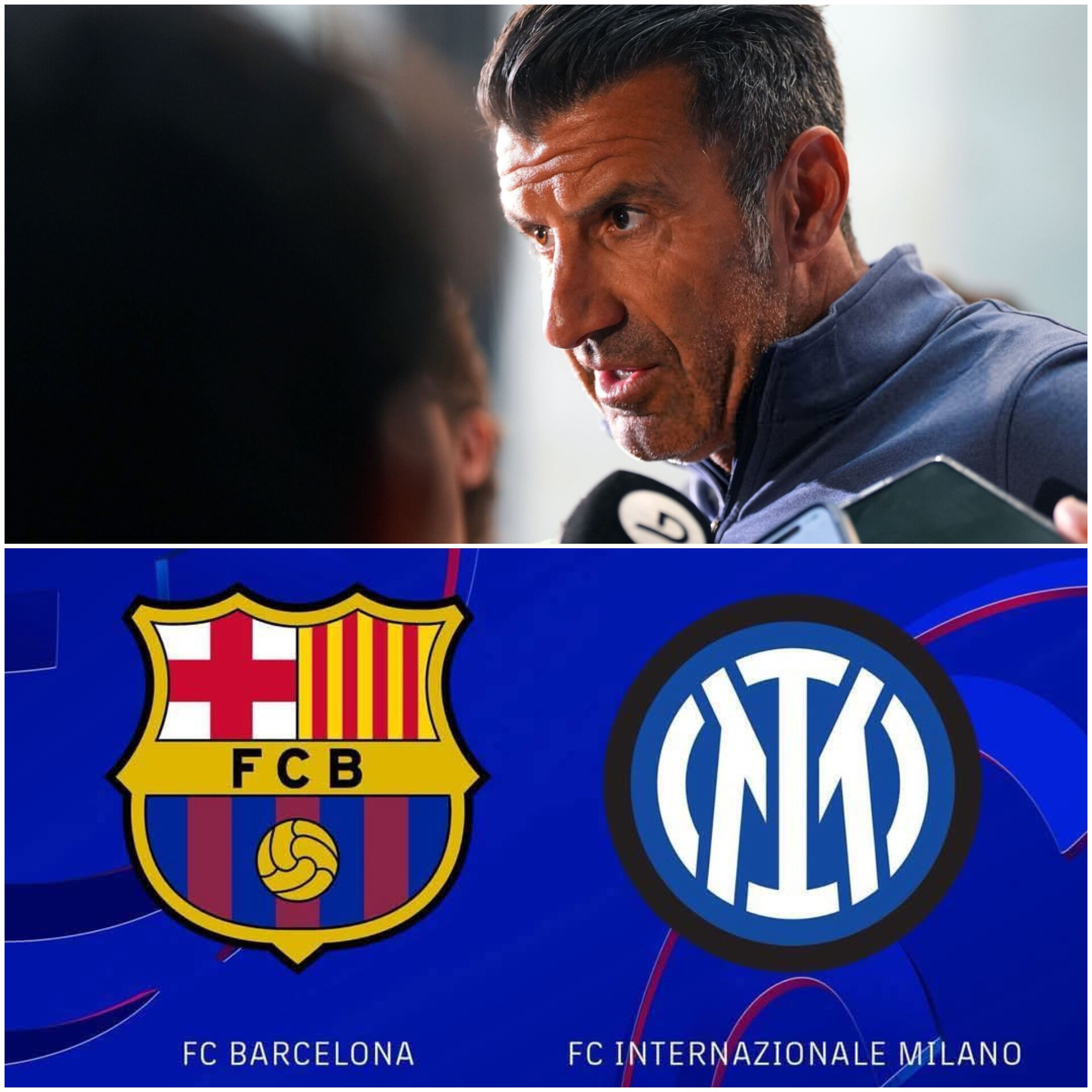Sport
Luis Figo: ‘Barcelona and Inter Have Two Distinct Playing Styles, But Anyone Who Believes Inzaghi’s Team Depends Only on Defense Is Mistaken.’

The world of football is a tapestry woven with diverse threads of strategy, philosophy, and execution. Two prominent threads in this tapestry are often exemplified by the contrasting styles of FC Barcelona and Inter Milan. These clubs, both giants of the game, have carved out distinct identities on the pitch, shaped by their respective footballing cultures and the tactical approaches of their managers.
Luís Figo, a legendary figure who graced the jerseys of both these iconic clubs, offers a unique perspective on their contrasting styles. His insights, born from firsthand experience, highlight the nuances that often escape casual observation. Figo astutely points out that while Barcelona and Inter may appear to operate at opposite ends of the tactical spectrum, a deeper analysis reveals a more complex reality.
Barcelona, for much of their modern history, have been synonymous with a possession-based, attacking style of play. “Tiki-taka,” as it became known, is a philosophy rooted in intricate passing, relentless movement, and a patient build-up. The aim is to dominate possession, wear down opponents, and create openings through a combination of skill and collective understanding.
This Barcelona style, popularized by coaches like Pep Guardiola, emphasizes the importance of technical mastery, spatial awareness, and unwavering commitment to the team’s overarching system. It’s a style that, at its best, can be breathtakingly beautiful and devastatingly effective.
Inter Milan, on the other hand, have often been associated with a more pragmatic approach. Historically, Italian football, and Inter within it, has valued defensive solidity, tactical discipline, and the ability to capitalize on counter-attacking opportunities. This approach, while sometimes perceived as less aesthetically pleasing than Barcelona’s, has proven to be highly successful, yielding numerous trophies and accolades.
However, as Figo rightly points out, it’s a gross oversimplification to characterize Inter Milan solely as a defensive team. Under the guidance of Simone Inzaghi, Inter have evolved into a side capable of both defensive resilience and potent attacking play.
Inzaghi’s Inter are indeed solid at the back, conceding few goals and frustrating even the most potent attacking lineups. This defensive organization provides the foundation for their success, allowing them to control games and dictate the tempo.
But to label them as merely defensive is to ignore the attacking talent and tactical sophistication that Inzaghi has instilled in the team. Inter possess players capable of making the difference in attack, players with the skill and vision to create scoring opportunities and punish opponents.
Inter’s attacking play is often characterized by quick transitions, incisive passing, and a directness that can catch opponents off guard. They are adept at exploiting spaces left by opposing defenses and launching swift counter-attacks that can lead to goals in a matter of seconds.
Figo’s words serve as a reminder that football is a game of complexities and nuances. Teams cannot be easily pigeonholed into simplistic categories. Even those sides that prioritize defensive solidity often possess the capacity for attacking flair and creativity.
The contrast between Barcelona and Inter, therefore, is not a contrast between attack and defense, but rather a difference in emphasis and style of execution. Both teams, in their own way, strive for victory, but they employ different means to achieve that end.
Barcelona’s style, with its emphasis on possession and intricate passing, requires a high degree of technical skill and tactical understanding. It demands patience, precision, and a willingness to adhere to the team’s system.
Inter’s style, while valuing defensive organization, also requires a different set of skills. It demands tactical discipline, physical strength, and the ability to execute quick transitions and exploit counter-attacking opportunities.
Figo’s experience at both clubs gives him a unique appreciation for these contrasting approaches. He understands the demands and challenges of playing in different systems, and he recognizes the strengths and weaknesses of each style.
Ultimately, both Barcelona and Inter represent successful models of football, albeit with different philosophies. Their contrasting styles contribute to the rich tapestry of the game, providing fans with a diverse range of footballing experiences.
As Figo suggests, a deeper understanding of these nuances is essential for a complete appreciation of the beautiful game. To reduce any team to a single dimension, whether it be attack or defense, is to ignore the multifaceted nature of football and the tactical brilliance that lies beneath the surface.

 Sport11 months ago
Sport11 months ago“I’m not trying to criticize Ancelotti, but I’m not happy with him for benching that player”: Bellingham Expresses Frustration Over Ancelotti’s Tactical Decision

 Sport11 months ago
Sport11 months agoBREAKING: Manchester City vs Liverpool Clash Cancelled! Title Race Takes a Twist

 Sport11 months ago
Sport11 months agoArsenal Poised for January Swoop on €70 Million Star Dusan Vlahovic

 Sport11 months ago
Sport11 months agoWHAT ON GOD’S GREEN EARTH DID WE JUST SEE?!

 Sport11 months ago
Sport11 months agoReal Madrid: Carlo Ancelotti’s Surprising Revelations About an Unexpected Quality of Vinicius

 Sport11 months ago
Sport11 months agoBREAKING: Arsenal’s Champions League Quarterfinal Opponent Revealed After Monaco’s Dramatic Win – Tough Challenges Await Arteta’s Men

 Sport11 months ago
Sport11 months agoChelsea Players Facing Suspension as Yellow Cards Mount

 Sport11 months ago
Sport11 months agoKey Arsenal Player Set for Return as Gunners Face Struggling Everton
















